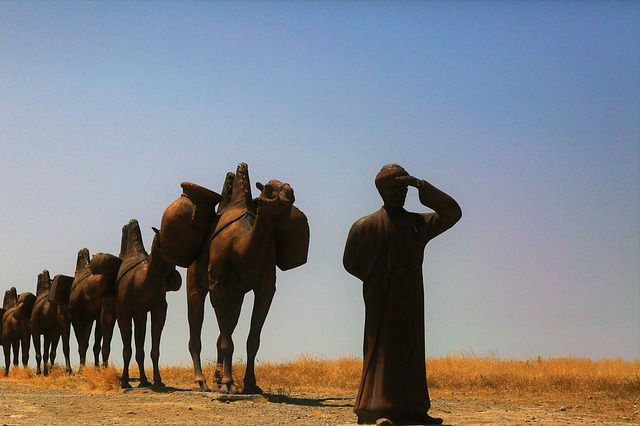Named by Ferdinand von Richthofen in 1877, the ‘Silk Road’ was a global network of commercial routes that connected the continent of Europe with the eastern parts of Asia. According to Silk Road history, it was established more than a millennium ago.
Now called ‘Silk Routes,’ Silk Road history spanned over 6,437 kilometers, including the Pamir Mountains and the Gobi Desert. Traders journeyed in caravans to protect themselves with camels or other pack animals. Gradually, large inns, known as caravanserais, sprang up to accommodate passing merchants.
History And Significance
The Silk Road history has a long-lasting effect on world culture and commerce. The trade posts, marketplaces, and passages of the Silk Road strategically were able to facilitate the interchange, distribution, and storage of commodities between the Far East and Europe during the Han Dynasty’s reign. During the Achaemenid Empire, Sardis in Turkey and Susa, presently Iran, went through the Royal Road, built by the Persian emperor Darius.
The Royal Road was augmented by other routes that connected Mesopotamia with the Indian subcontinent and the northern region of Africa through Egypt. By the Royal Road (later integrated into the Silk Road), Alexander the Great, the emperor of the ancient Greek country of Macedonia, extended his control into Persia. The Roman and Kushan empires also benefited from the Silk Road, which connected Greece and China during 100-200 B.C.
Interconnectedness From The Route
On the Tigris River, routes connected Antioch with Ctesiphon and Seleucia across the Syrian Desert. Routes from Seleucia headed eastward across the Zagros Mountains to Ecbatana and Merv, from where they continued to China, Afghanistan, and Mongolia. The Silk Road linked many Mediterranean Sea ports to cities in the Roman Empire and Europe. Afterward, the path helped flourish commerce up the Tigris and Euphrates rivers, linking ports on the Persian Gulf.

Cultural Significance Of The Silk Road History
The Silk Road’s history is a tale of cultural confluence. In addition to silk, tea, jade, spices, porcelain, and textiles, horses, and glassware items were sent along the road. Fruits, vegetables, cattle, grain, leather, tools, religious artifacts, artwork, precious stones, metals, language, culture, religious views, philosophy, and science were among the other significant exports.
Commodities like paper and gunpowder, invented by the Chinese, deeply impacted Western history and society. China made paper in 300 B.C., and through the Silk Road, it reached Samarkand around 700 A.D. This resulted in significant industrial change, with written language becoming a crucial medium for mass communication. Gutenberg’s printing press made the widespread manufacturing of books and newspapers possible, allowing for a greater flow of knowledge and news.
Impact On Daily Life
Gunpowder came to Europe and was refined for use in cannons in England, France, and other places in the 1300s. Gunpowder had a significant impact on European political history. The rich flavors of the East were transformed by European cuisine, which quickly became well-known in the West. Glassmaking techniques spread to China from Iran and Central Asia.
Exchange Of Culture
Marco Polo was a well-known Silk Road explorer. The Venetian adventurer’s book, “The Travels of Marco Polo,” was inspired by his travels on the Silk Road. Islam, Buddhism, Manicheism, and Christianity were among the many cultural products and exchanges greatly aided by the Silk Road. Buddhist monks journeyed from India to Central Asia and China to teach the new religion and explore Buddhist sites. The Nestorians played a critical role in the spread of Manicheism and Christianity in Central Asia and China.
Intercultural Richness
The Silk Road’s history brought about intercultural richness. China’s most popular music came from Eastern Turkestan and Central Asia. The musical traditions of Kashgar, Bukhara, and Samarkand blended with Chinese music culture. Players from the East frequently appeared in Constantinople. Meanwhile, Iranian, Sogdian, and Turkic performers contributed significantly to China’s performance culture. Tan terracotta dancers, mask-wearing actors, and steppe frescoes that portray Central Asian musicians and performers are depictions of that.
As per the Silk Road history, the road was also known to have spread diseases. Some studies indicate that the Black Death most likely originated in Asia and spread along the Silk Road. Along the road, small towns developed into cosmopolitan metropolises. Information sharing produced inventions and new technology that transformed the globe.



